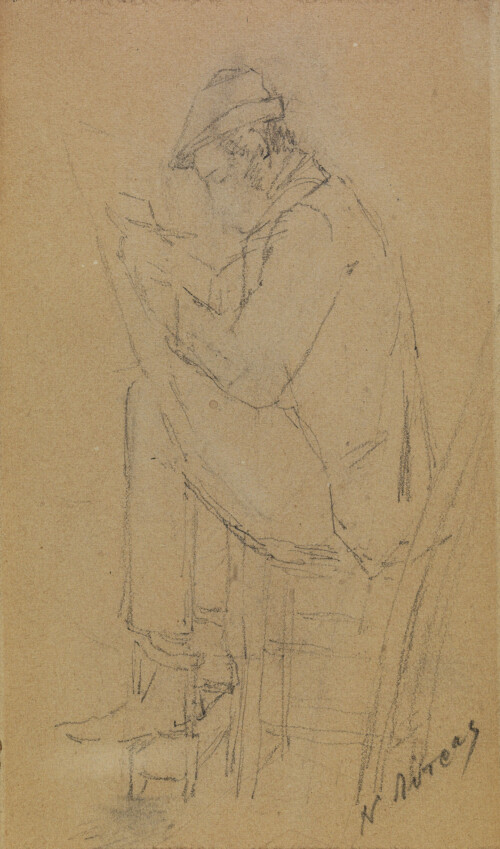| 49 |
Greek, 1832 -1904
The artist
pencil on paper
signed lower right
13.5 x 7.5 cm
PROVENANCE
private collection, Athens
acquired by the present owner in 1976 from the son of Constantinos Maleas, Fotinos Maleas, as a set of three drawings in one frame. The original frame bears an inscription on the reverse.
.
these drawings were verified by Dr Nelli Missirli. Other works from the same collection by Nikiforos Lytras are illustrated in the book of Lytras by Dr Nelli Missirli.
| sold for 1 532.05 € |
Nikiforos Lytras was born on the island of Tinos in 1832.
At the age of eighteen, he moved to Athens to study at the School of Fine Arts, under Ludwig Thiersch and Raffaello Ceccoli among others. He completed his studies in 1856. Later, in 1860, on a scholarship from the Greek government, he continued his studies at the Royal Academy of Fine Arts, Munich in the studio of Karl Theodor von Piloty.
While still in Munich, in the summer of 1865, he met Nikolaos Gysis and together they studied the masterpieces of the German museums.
On his return to Athens in 1866, Lytras was appointed professor at the School of Fine Arts Athens in the department of painting, a position he held for the remainder of his life and playing an influential role in the Greek art scene.
His first period of works focused on historical, religious and mythological subjects. After 1870 Lytras’ work shifts to everyday life scenes, portraiture and still life. He is the first Greek painter to explore in his oeuvre the world of ordinary people in town and countryside and the world of child and family. In spite of his awareness of impressionism, Lytras chose to remain faithful to a more academic style, without, however, relying on conventional compositions or decorative affectations.
Together with Nikolaos Gysis, he embarked on two artistic journeys; to Asia Minor in 1873 and Paris in 1876. In 1879 he visited Egypt. In his trips to Asia Minor and Egypt, he observed and studied the local people and customs. This experience informed his paintings in depicting elements of Anatolia and the presence of the Greek spirit that passed through the centuries in that part of the world.
In 1879 he married Irene Kyriakidi, the daughter of a tradesman from Smyrna and together they had six children.
Lytras was one of the greatest Greek painters. His contribution in almost forty years of teaching was also of great importance, as he has not only influenced younger generations but was involved in the school’s restructuring. He is one of the leading representatives of the ‘Munich School'.
Lytras died at the age of seventy-two, after a brief illness that is believed to have been caused by chemicals found in paint.
His work is found in many public and private collections, notably: The National Gallery of Greece, the Athens Municipal Gallery, the Leventis Gallery, the Averoff Gallery, the Koutlides Collection and the National Bank of Greece collection.
